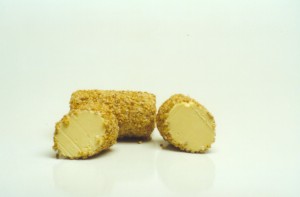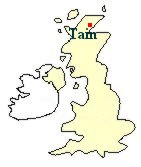
|
|
||||||
Caboc is Scotland's oldest cheese, known in the 15th century in the Western Highlands. It was described as a chieftain's cheese because in those days rich, soft cheeses were reserved for the nobility and such cheeses were called 'white meats'. The cheese was first made by Mariota de Ile, the daughter of the chieftain MacDonald of the Isles. When Mariota was 12 years old she was in danger of being abducted by the Campbells, who planned to marry her to one of their own and seize her lands. Mariota escaped to Ireland, learned how to make cheese and brought her knowledge back to her people. Mariota passed the recipe on to her daughter, who in due course passed it to her daughter. The recipe, still kept secret, has been handed down from mother to daughter ever since, the present maker being Mrs Suzannah Stone of Tain. She works with a team of eight local women and her cheese is sold under the seal of Highland Fine Cheeses Ltd. Caboc is made using the double cream of pasteurised cows' milk, without rennet, and the cheese is shaped into small logs. Nowadays, each cheese is rolled in toasted pinhead oatmeal. The paste is primrose yellow, rich and smooth like butter and has a light nutty flavour, from the oatmeal. The cheese is generally eaten when young, within 5 days of making. It can, however, be kept for up to three weeks in cool conditions. Each log is 3cm in diameter, 7cm in length and weighs 100g. Caboc has a fat content of 67%. Legend has it that the process of coating Caboc in oats was discovered by accident. A cattle herder returned home with the day's cheese in the same box he had used to carry his oatcakes earlier that day. The oat-coated cheese was enjoyed so much that from that day onwards Caboc has always been made with the oatmeal coating. Caboc can be enjoyed as part of a cheese-board or served as a starter with watercress and dry brown toast. It can also be mixed with a little Drambuie or malt whiskey and served as a dessert. It is best accompanied with a light red wine, Beaujolais for instance. Click here or press your 'Back' button to return |
|
||||||
| All articles © www.teddingtoncheese.co.uk | |||||||
